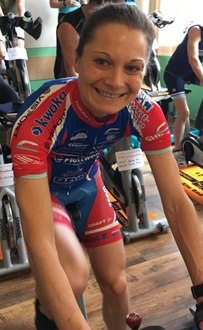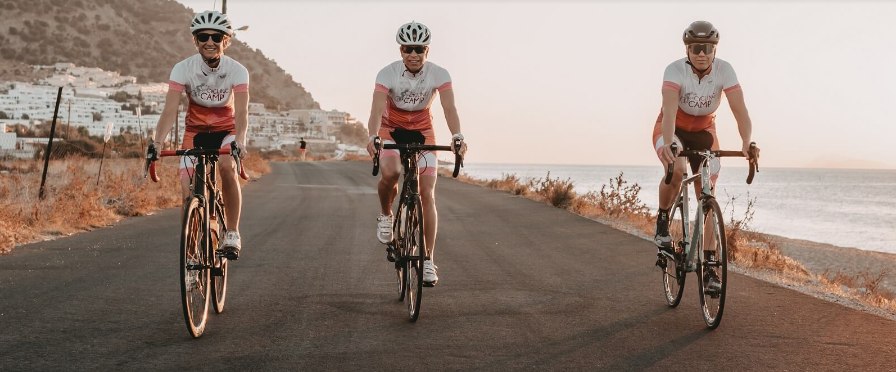In some countries around the world, women riding bicycles is ostracized by society or even prohibited by law. Iran, Iraq or Syria are among them. In Europe, too, there was a time when people preferred to see women behind the stove rather than on a bicycle. At the end of the 19th century, there were already cycling competitions by women on the road and on the track. Women were able to shine with record performances and long distances at that time, before national federations banned women from participating in races at the beginning of the 20th century. It is only in the last few decades that women have again been able to actively participate in competitive cycling. Still, there are noticeable differences between men’s and women’s professional cycling to this day, from salary to the maximum length of races. Is this having an impact on the amateur sector? Or is it for entirely different reasons that far fewer women race bikes than men? In 2020, the female share of road cyclists in Germany was 27 percent. Yet the number of female cyclists has grown steadily in recent years. Many women prefer to stay among their peers on their training rides and avoid mixed groups with men or do their laps alone. What are the possible reasons for this? Do women ride bikes differently? What are the advantages of women-only groups? These and many other things concerning women’s cycling I would like to try to shed light on here. For this purpose I have interviewed active female cyclists from different areas.

Sandra Waschnewski is a passionate cyclist and co-founder of Veloine. Veloine translates as “cycling heroine”. Veloine is a premium cycling apparel exclusively for women and has been on the market since 2019. Veloine won in this year’s ISPO Brandnew 2021 competition for innovation in women’s cycling apparel. Especially with the Cycling Kit for pregnant women Veloine could convince the jury.
How was the idea for Veloine born?
Sandra: As is often the case with start-ups, the idea was born out of personal passion and need. Although women now make up over one quarter of the of cyclists (and the trend is rising), many brands have a much smaller range of products for women than for men. Much more disturbed me the image that is partly drawn by women on the bike, much is very girly and playful. That did not correspond to my image of this sport. We saw a gap for clothing that is both performance and design oriented and manages to appeal much better to modern female riders.
Have you noticed any changes in the last few years?
Sandra: Since our inception in 2018/2019, a lot has happened in the industry – but it’s fair to say that women are still significantly underrepresented in cycling. This starts with the choice of clothing, and ends with the (lack of) pay for women in professional cycling. We therefore want to make our – albeit small – contribution to giving women more space in this sport, giving them a sense of strength, and better addressing women-specific needs.
Veloine also organizes group rides for women, why do women often prefer to bike with women?
Sandra: Women’s groups have many advantages: Together, women can learn a lot from each other on the bike, share very personal experiences, and feel a sense of community. This motivates many to keep at it. However, I also think that many women have false or negative beliefs, such as worrying about not being able to keep up with male riders in the group. Women tend to underestimate themselves rather than overestimate themselves. They don’t have this worry as much when they are in a women’s group. In our social rides, we have found that very different types of women often come together – beginners as well as women who have been riding for years. With different equipment, and sometimes very different levels of ability. And yet the sense of community was always very strong, because the social factor was more important than the training effect.

In May 2021 the MyCyclingCamp will take place again. The MyCyclingCamp is a road cycling camp by women for women. Three female guides are at the start: Christiane Schrimpf, Sonja Hohenberger and Monika Sattler. Through their many years of experience, they have insights into the differences between men and women in cycling. Christiane Schrimpf has been riding road and mountain bikes for many, many years. She leads the camp together with Sonja Hohenberger. Both of them have successfully mastered the Ötztaler Radmarathon together and enjoy passing on their knowledge about road cycling.
Christiane: Of course I think it’s great for us women that cycling is slowly but surely becoming more and more established. What is different in cycling for women than for men? Well, from my experience with women in the hobby sector, I can already identify a few things. It starts with the fact that many women still don’t dare to try road cycling. Especially “no way” 😉 with their men. I have often been told in my many cycling camps that especially in road cycling the first step on the bike with the thin, wobbly tires requires great courage. And many men probably can’t understand that at all. Being slowly introduced to the bike, the gears and the “strange” brakes from woman to woman makes it much easier for the girls. And the fact that in the beginning it is not yet a matter of speed, but first of all of one’s own feeling, the safety on the bike, that is a great help for many. Regarding training, I have made the experience that it is easier to explain to women that even a casual “ride” can trigger a great training effect. And if they then notice from time to time that it gets faster and faster almost by itself, then it is of course especially fun! This way the motivation stays high and one or rather woman 😉 doesn’t get off the bike completely knocked out after a ride. This happens mostly after training sessions in mixed groups (women and men), where you had to concentrate almost only on the rear wheel of the front man.

Felicitas Kistler is an active amateur cyclist and regularly participates in competitions where she competes and exchanges ideas with other women. Her homepage is coming soon.
| name: | Felicitas Kistler |
| age: | 36 years old |
| hometown: | Landshut |
| club: | Team Baier Landshut |
| active since: | 2014 |
| personal successes: | 2nd place RTF Bezirk Niederbayern – ladies 4th place Drei-Länder-Giro 13th place Alto Algarve, Portugal |
How long have you been cycling?
Felicitas: I came to cycling relatively late and have been actively riding with Team Baier Landshut for a good 7 years. I started with the regional RTFs, because the routes are marked and I could always find comrades-in-arms. Over the years I have specialized in long bike marathons and hill climbs where men and women are at the start together. I incorporate races with timing every now and then to test my market value. A great tool for this in winter is also the indoor version with ZWIFT: here the rides can be chosen as mixed version or ladies only. To compete internationally is incredible fun – the girls know no mercy! At the same time we hold our Team Baier trainings also during the Corona time 2x weekly on ZWIFT and are pleased, about the constantly growing team.
What is the difference for you between men and women in cycling?
Felicitas: Cycling is still a male domain. I also train and ride mainly with men. At the moment, we are experiencing a small turnaround in Team Baier, so that more women are joining us again. In my opinion, many women don’t attach so much importance to performance measurement, a direct comparison and the technique. Unfounded fears, inhibitions and still many prejudices unfortunately often keep talented girls away. In triathlon or running, on the other hand, there are many more women. The competition between men and women is still a big issue. Being lapped by a woman strongly scratches the male ego and is not welcome. Personally, I find training with men very good, as it has brought me to where I am now. Even as a woman, you need to know how to change a flat tire and how to take care of yourself in an emergency – that’s best learned from fellow cyclists. In the race itself, I don’t see much difference between men and women. In race mode, everyone is focused and wants to win.
The commitment of these women in cycling is encouraging and is the best prerequisite for both facilitating women’s entry into cycling and establishing equality with men. Thank you very much!


